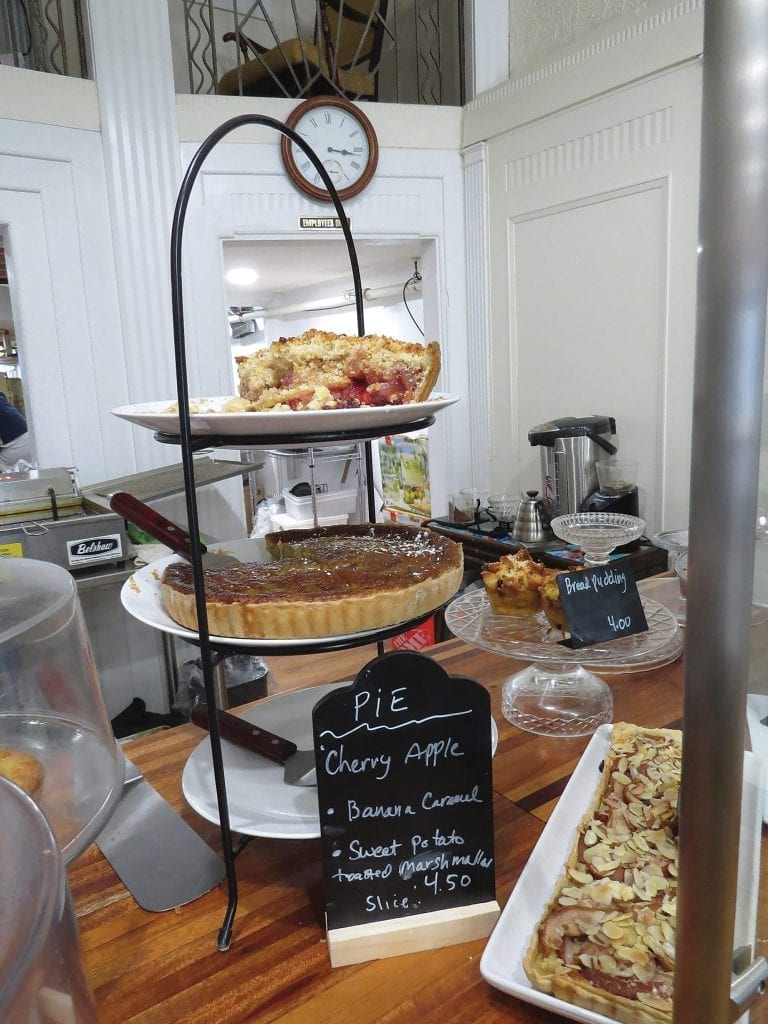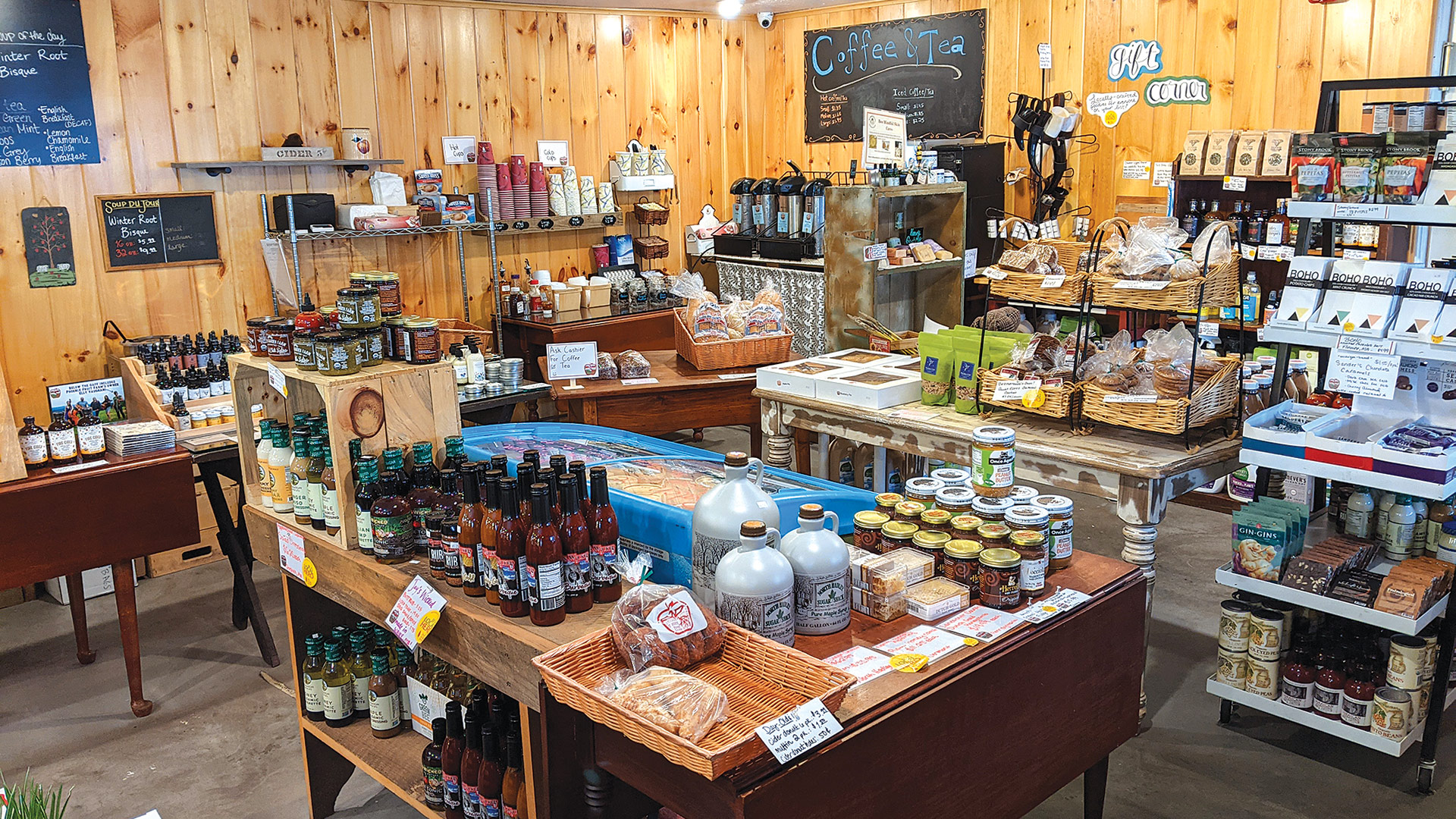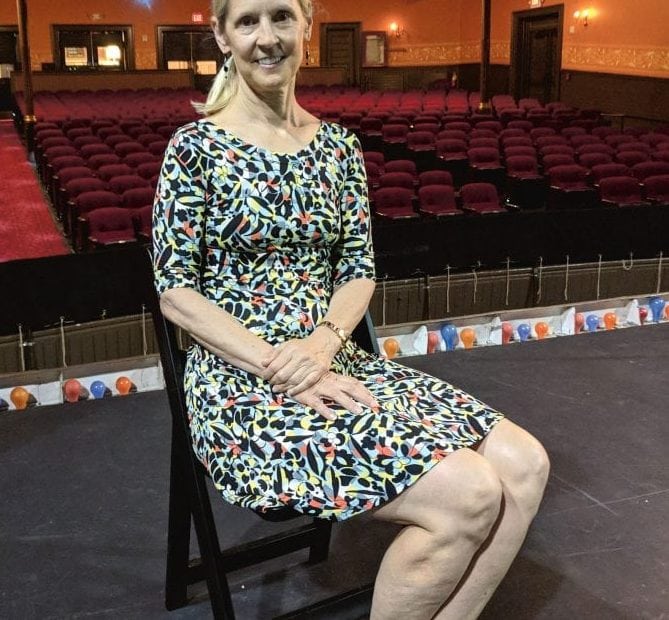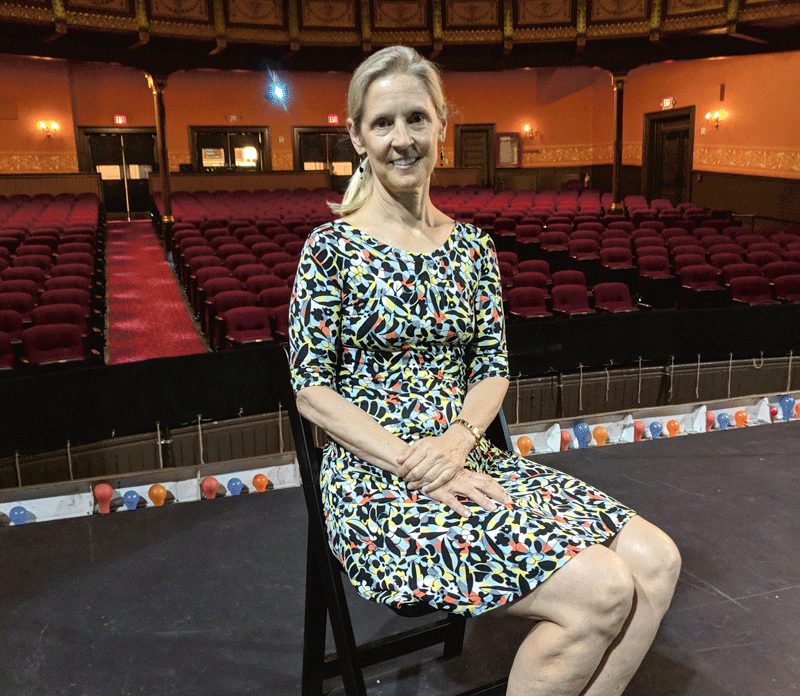Shopping Local
Do you have Amazon fatigue, or just want to support some great local shops? Thankfully, Western Mass. provides myriad gift-giving options this holiday season, all of which support the region’s business owners during an especially difficult year. On the following pages are just a few suggestions. COVID-19 has altered the experience at many businesses, so check the websites for hours, operations, and how to purchase and enjoy their products and experiences. Gift cards are available from most. Happy holidays!
The Artisan Gallery
162 Main St., Northampton
(413) 586-1942; www.theartisangallery.com
After 36 years in business, the Artisan Gallery is closing in January, but should have plenty of eclectic items in stock before the holidays. Its collection includes handmade ceramics, creative clothing, a fun children’s section, unique accessories, and jewelry, and features artists who reside and work in the Pioneer Valley and the hills that surround it.

Black Birch Vineyard
155 Glendale Road, Southampton
(413) 527-0164; blackbirchvineyard.com
One of several wineries in Western Mass. that offer vineyard tours, Black Birch — whose owners call the vineyard “a family that moves wine and the nuanced process of creating it” — provides a number of gift-giving opportunities, from wine-tasting events to enrollment in a wine club that includes 12 seasonal bottles throughout the year at a 15% discount.
Catamount Mountain Resort
78 Catamount Road, Hillsdale, N.Y.
(518) 325-3200; www.catamountski.com
Catamount offers some of the most varied ski terrain in Southern New England. Family-oriented, close to both Great Barrington and the Hudson Valley, Catamount is oriented towards all skier types, and has expanded its menu of year-round offerings with the 2019 addition of the Catamount Zip Tour, featuring the longest zipline in the U.S. at 5,523 feet.
Cooper’s Gifts
161 Main St., Agawam
(413) 786-7760; coopersgifts.com
Cooper’s is not just a store — it’s a destination,” shopkeeper Kate Gourde has said, calling her facility a shopper’s oasis featuring trendy clothing, window fashions, distinctive home furnishings, and exquisite gifts. “We are serious about style, yet you will find this shop unpredictable, quirky, and alluring. We want to be something exciting and new every time you visit.”
Front Porch Charcuterie
29 Evergreen Road, Vernon, Conn.
(860) 916-1658; www.frontporchcharcuterie.com
Front Porch gathers cheeses, produce, and honey from local farms, farmers’ markets and shops to provide customers with fresh local specialties, including charcuterie boards, trays, and boxes of different sizes for myriad occasions. “I hope we take what we have learned from this pandemic and make family and friends our priority,” its owner, Michele Martinez, says. “I am here to help you make your gatherings special.”
 Granny’s Baking Table
Granny’s Baking Table
309 Bridge St., Springfield
(413) 333-4828; www.grannysbakingtable.com
Proprietors Sonya Yelder and Todd Crosset say their mission is to create a space and products that harken to simpler times, when baking was from scratch and the table was for gathering and conversation. The bakery combines two baking traditions: American South and Northen European, with a singular commitment to authentic small-batch baking.
Hope & Olive
44 Hope St., Greenfield
(413) 774-3150; hopeandolive.com
Hope & Olive’s owners, siblings Jim and Maggie Zaccara and Evelyn Wulfkuhle, call their establishment an “everyday-special restaurant” that sources much of its menu with nearby farm products. “We serve inspired cocktails, have an eclectic by-the-glass wine menu, and 12 great beers on tap. We invite you to come and have lunch, brunch, dinner, or maybe just drinks, snacks, or a housemade dessert.”
Michael Szwed Jewelers
807 Williams St., Longmeadow
(413) 567-7977; michaelszwedjewelers.com
As a master IJO (Independent Jewelers Organization) jeweler, Michael Szwed Jewelers keeps up with the latest fashions and trends in fine jewelry and every other aspect of the industry, including innovative technologies. As a result, the owner notes, “we are able to offer the finest diamonds in the world at the best value.” The website features a searchable catalog.
 Jackson & Connor
Jackson & Connor
150 Main St., Northampton
(413) 586-4636; www.jacksonandconnor.com
This small, unique menswear specialty shop offers a selection of eye-catching goods, from stylish suits to cozy sweatpants, ties, T-shirts, socks, vests, sport coats, accessories, shoes, hats, jewelry, care products, colognes, and more. The store also provides full tailoring services, and frequently tracks down hard-to-find items for customers through special and custom orders.
Odyssey Bookshop
9 College St, South Hadley
(413) 534-7307; odysseybks.com
Over its 57-year history, Odyssey Bookshop has earned a reputation as an eclectic spot to look for books, and also also features a full-service website for ordering. In addition, according to its website, “we strive to provide a hospitable and nurturing environment to encourage the healthy exchange of ideas by hosting numerous readings, book groups, panel presentations, and online discussions.”
Off the Beam Woodworking
www.offthebeamwoodworking.com
Local artist (and full-time nurse) Sheri Lee handcrafts unique woodworking pieces, including cheese and serving boards, picture frames, cribbage boards, knife racks, and lanterns from domestic and exotic woods — and all proceeds are donated to a number of nonprofit organizations on Cape Cod that work to preserve, educate, and foster conservation.
Pioneer Valley Food Tours
www.pioneervalleyfoodtours.com
This enterprise creates walking food tours that explore local flavors from Northampton and around the region. It also creates gift boxes sourced from the unique natural resources of the region’s fields and farms, as well as Pioneer Valley picnic baskets of selections ready to bring on an outdoor adventure. Choose a pre-set tour itinerary, or create a custom tour to suit your tastes.
 Pioneer Valley Indoor Karting
Pioneer Valley Indoor Karting
10 West St., West Hatfield
(413) 446-7845; pioneervalleykarting.com
The 1,000-foot track at Pioneer Valley Indoor Karting is capable of racing up to eight karts at once, with the fastest on-track speeds in Massachusetts, featuring a combination of straightaways designed for speed and sweeping corners for technical driving that will challenge everyone from beginners to experts. The track is equipped with a state-of-the-art timing system to record the individual lap times of each kart.
Renew.Calm
160 Baldwin St., West Springfield
(413) 737-6223; renewcalm.com
For the past two decades, Renew.Calm has offered an array of both medically based and luxurious spa treatments, with services including skin care, therapeutic massage, nail care, body treatments, yoga, hair removal, makeup, and lashes. The 4,000-square-foot facility also hosts educational events, fitness classes, and more. Multi-treatment packages make great gifts.
 Ski Butternut
Ski Butternut
380 State Road, Great Barrington
(413) 528-2000; www.skibutternut.com
Skiing and snowboarding definitely make those New England winters more tolerable. This family-oriented ski area in Great Barrington provides 110 acres of skiing spread across 22 trails. If you are shopping for someone who loves the outdoors, a gift certificate to Ski Butternut may open the doors to a new passion. If they’re already hooked on skiing, a lift ticket may be most appreciated.
SkinCatering
1500 Main St., Suite 220, Springfield
(413) 282-8772; skincatering.com
SkinCatering offers a release from the hectic holidays — and, let’s be honest, from the stress of 2020 in general — so an extra-special, very personal gift may be just what the doctor ordered. Pamper someone special with a massage, facial treatment, spa and sauna package, or any number of other options. Membership packages are available at several different levels.
 Tea Guys
Tea Guys
110 Christian Lane, Whately
(413) 303-0137; www.teaguys.com
It all begins with hand-blended tea recipes, crafted in small batches daily in the humble tea factory built out of an old train station in Whately. This local success story offers loose tea, 100% plant-based tea bags, matcha (both pure and flavored, mixed in house), tea concentrates, and now sparkling teas — more than 100 tea varieties in all.
The Toy Box
201 North Pleasant St., Amherst
(413) 256-8697; www.facebook.com/thetoyboxamherst
The Toy Box is “the family fun store of Amherst,” encouraging kids and adults to play and explore. “Parents are being required to stay home and work and be parents at the same time,” owner Liz Rosenberg recently said about doing business during a pandemic. “That’s a challenge beyond all challenges. To be able to assist with that … that’s my job. I’m lucky to be in a position where I can bring some joy.”
WEBS
75 Service Center Road, Northampton
(800) 367-9327; yarn.com
A second-generation, family-owned business, WEBS, has been a destination for knitters, weavers, and spinners for more than 40 years. This Western Mass. mainstay with a national reach is known as America’s Yarn Store for a reason, with a 21,000-square-foot retail store, a robust online presence, as well as comprehensive classes and events for all skill levels.
Westfield Homeless Cat Project
1124 East Mountain Road, Westfield
(413) 568-6964; www.facebook.com/westfieldhomelesscatprojectadoptions

The Foundation for TJO Animals
66 Industry Ave., Suite 3, Springfield, MA 01104
(413) 306-5161; www.tjofoundation.org
Instead of buying someone a gift, why not make a donation in their name to an animal-welfare nonprofit? The Westfield Homeless Cat Project is a no-kill cat rescue completely staffed by volunteers. It does not discriminate against age or illness provided that vet care is manageable. Meanwhile, the Foundation for TJO Animals provides financial assistance and veterinary care for the animals at the Thomas J. O’Connor Animal Control and Adoption Center, which serves the cities of Springfield, Holyoke, and Chicopee.












 Granny’s Baking Table
Granny’s Baking Table Jackson & Connor
Jackson & Connor Pioneer Valley Indoor Karting
Pioneer Valley Indoor Karting Ski Butternut
Ski Butternut Tea Guys
Tea Guys







